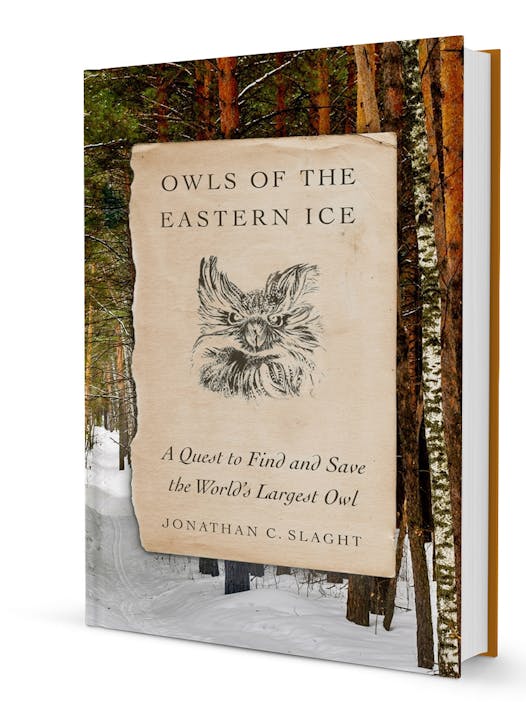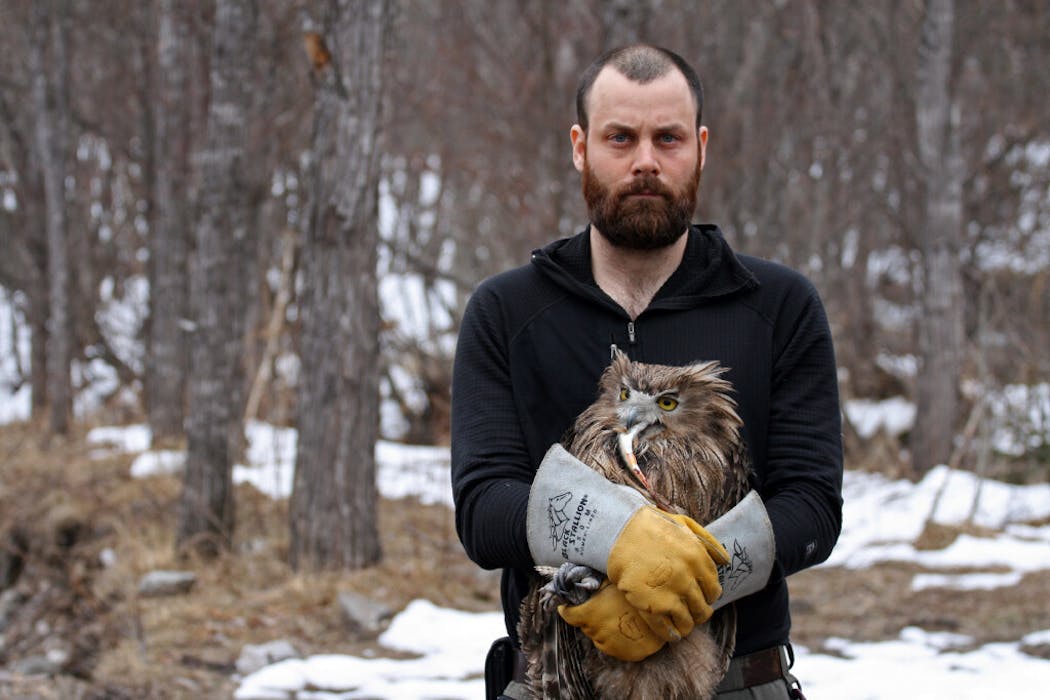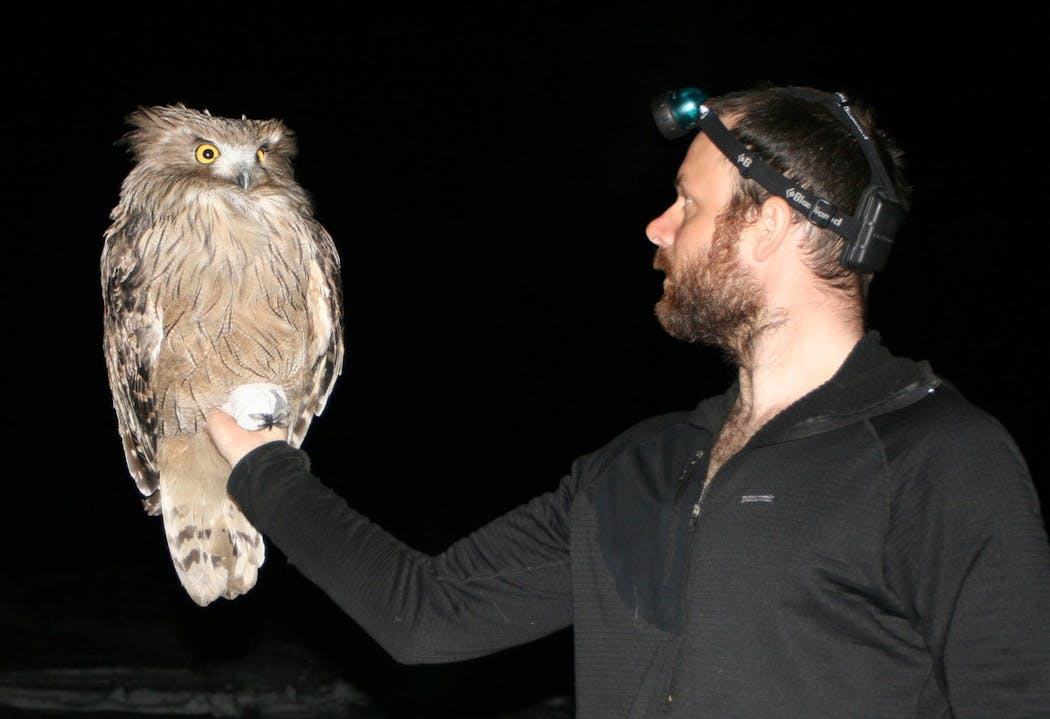Jonathan Slaght's book, "Owls of the Eastern Ice: A Quest to Find and Save the World's Largest Owl," had gone through four printings by mid-December and local bookstores still couldn't keep it in stock. Why is a book about studying owls in the Russian Far East, one of the wildest places on the planet, so popular with readers, including me?
Maybe because it's a fascinating mystery story (will they find enough of these extremely secretive owls to study) and an adventure tale full of odd and compelling Russian characters. It's set in a place of astonishing beauty and ruggedness, with danger around every corner in a remote old-growth forest. And it's a tale about an intrepid young wildlife biologist intent on saving one of the world's rarest owls.
The Blakiston's fish owl is an endangered species few of us have heard of and fewer still will ever see. Slaght (rhymes with "cat") describes them as one of the most charismatic and enigmatic owls in the world. Their stronghold is in the Primorye Province forests adjacent to the Russian Pacific Coast and there were few studies to draw on when he set out to focus his graduate work on the "ice owls."
How big are these owls? Their wingspan is similar to a bald eagle's, about 6 feet across. They stand as tall as a fire hydrant and Slaght has sometimes mistaken an owl in a tree for a small bear. These big birds have a disheveled look, with their long, loose feathers needed for the extreme cold.
"They're a challenge to study," says Slaght. "You have to be willing to spend a long time in the woods at minus 30 degrees." Winter is the best time to locate fish owls, because when they can be found at all, it's usually near an opening in river ice, where an owl pair will stake out a territory. They spend much of the night standing on ice or perched low on a branch, waiting to pounce on salmon or trout.
I was amazed to read that Slaght and his colleagues would sometimes follow owl tracks along a frozen river to find its fishing hole — the mind boggles at the idea of tracking a raptor. The first year of the study drove the researchers nearly to despair as they tried to locate enough owls to study. Learning to trap the owls was another major hurdle, but they were finally able to attach radio telemetry devices to a number of them. This helped pinpoint which areas the owls used, information that guided logging companies to preserve the huge trees the owls need for nesting.
Along the way, the researchers endured blizzards, broken equipment, local residents eager for a night of alcohol-fueled carousing, substandard living conditions and even a hermit who may have been on the run from Russian authorities. Slaght takes it all in — the weather, the human characters, the charismatic owls, the Spartan diet — with a bemused attitude.
"I'm not an adventure junkie," he says, "but I like being in wild places with few people, where nature is in control of what happens."
Slaght works for the Wildlife Conservation Society, with headquarters in New York City. He's stuck at a desk at his home in Minneapolis these days, writing grant applications, but he does get out on the road for two to three months each year. Except for this past COVID year, he returns to Primorye each year. A limiting factor for any cavity-nesting species is the scarcity of nest sites, so the owl team has been installing nest boxes near rivers in the province. These are essentially 55-gallon soybean barrels, an approach that has saved the fish owl subspecies in Japan.
Slaght thought he'd only write one book and then move on, and he seems a bit stunned by how deeply this one has been resonating with readers. Since he has more stories to tell, he's planning more books.
Here's some free advice for his publisher: Whatever book Jonathan Slaght writes next, print lots of copies.
St. Paul resident Val Cunningham, who volunteers with the St. Paul Audubon Society and writes about nature for local, regional and national newspapers and magazines, can be reached at valwrites@comcast.net.
Singled out
Jonathan Slaght's "Owls of the Eastern Ice," was nominated to the National Book Award's longlist for 2020 and was named a New York Times Notable Book of 2020. The Wall Street Journal put Slaght's book on its list of 10 Best Books of 2020 and it was included as a Times Nature Book of the year for 2020.
More on fish owls
Find out more about fish owls on the Blakiston's Fish Owl Project website, fishowls.com, or google the bird's name.
Owls of the Eastern Ice
By: Jonathan C. Slaght.
Publisher: Farrar, Straus & Giroux, 368 pages, $28.






